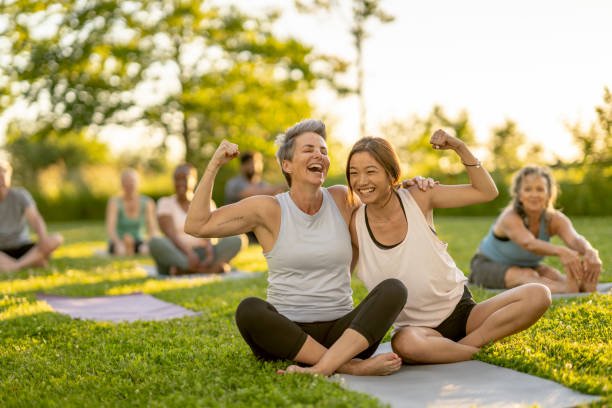
Exercising during the summer can be both enjoyable and challenging.This guide will provide you with essential tips, safety measures, and a variety of exercise options to help you stay active and healthy during the hot summer months.
Best Practices for Summer Exercise
Hydration and Nutrition
Stay Hydrated:
- Drink plenty of water before, during, and after exercise.
- For workouts longer than an hour, consider sports drinks to replenish electrolytes.
Eat Wisely:
- Consume light, balanced meals rich in fruits, vegetables, and lean proteins.
- Avoid heavy, greasy foods that can slow you down.
Appropriate Clothing and Sunscreen
Wear Proper Attire:
- Opt for light-colored, loose-fitting clothing made from moisture-wicking materials.
- Use a wide-brimmed hat to protect your head and face from the sun.
Apply Sunscreen:
- Use broad-spectrum sunscreen with at least SPF 30.
- Reapply every two hours or more often if sweating heavily.
 Timing and Acclimatization
Timing and Acclimatization
Choose the Right Time:
- Exercise during the cooler parts of the day, such as early morning or late evening.
- Avoid working out during peak sun hours (10 a.m. to 4 p.m.).
Acclimate to the Heat:
- Gradually increase the intensity and duration of your workouts over 1-2 weeks.
- Allow your body time to adapt to the higher temperatures.
Monitoring and Safety
Listen to Your Body:
- Pay attention to signs of heat exhaustion, such as dizziness, headache, and excessive sweating.
- If you experience any of these symptoms, stop exercising immediately and move to a cooler area.
Check Air Quality:
- Monitor the air quality index (AQI) before exercising outdoors.
- Poor air quality can exacerbate respiratory issues, especially during high temperatures.
 Types of Summer Exercises
Types of Summer Exercises
Swimming:
- Provides a full-body workout while keeping you cool.
- Ideal for all fitness levels and easy on the joints.
Cycling:
- Enjoy the outdoors while getting a cardiovascular workout.
- Opt for early morning or evening rides to avoid the heat.
Hiking:
- Choose shaded trails or wooded areas for a refreshing experience.
- Ensure you have proper footwear and carry plenty of water.
Yoga:
- Outdoor yoga in a park or backyard can be relaxing and invigorating.
- Morning or sunset sessions are particularly enjoyable in summer.
Team Sports:
- Engage in sports like soccer, basketball, or volleyball.
- Schedule games during cooler times and take regular water breaks.
Exercise Timing and Frequency
| Best Time to Exercise | Exercise Frequency | Exercise Type |
| Early Morning (5-8 a.m.) | 3-5 times per week | Running, cycling, hiking |
| Late Evening (6-9 p.m.) | 2-4 times per week | Swimming, team sports, yoga |
| Midday (12-2 p.m.) | 1-2 times per week | Indoor gym workouts, pilates |
 Q&A Section
Q&A Section
Q: How much water should I drink while exercising in the heat?
A: It's recommended to drink at least 16-20 ounces of water 2 hours before exercise, and then continue to hydrate every 15-20 minutes during activity. Post-exercise, drink enough to replace any fluid lost through sweat.
Q: Can I exercise if the air quality is poor?
A: If the AQI is above 100, consider exercising indoors or choosing low-intensity activities. Poor air quality can increase the risk of respiratory problems, particularly for sensitive groups.
Q: What are some signs of heatstroke to watch out for?
A: Symptoms of heatstroke include confusion, lack of sweat despite high temperature, red/hot/dry skin, and a rapid pulse. If you or someone else exhibits these symptoms, seek medical attention immediately.
Q: Are there any specific foods that help with hydration?
A: Foods with high water content, such as watermelon, cucumbers, oranges, and strawberries, can help maintain hydration levels. These also provide essential vitamins and minerals.
Q: Is it okay to work out every day in the summer?
A: Yes, as long as you listen to your body and allow for rest days when needed. Ensure you vary your workouts to avoid overuse injuries and stay hydrated.
Sources:
https://www.fitnessblender.com/
https://health.gov/our-work/nutrition-physical-activity/physical-activity-guidelines
https://www.nhlbi.nih.gov/health/educational/lose_wt/phy_act.htm



